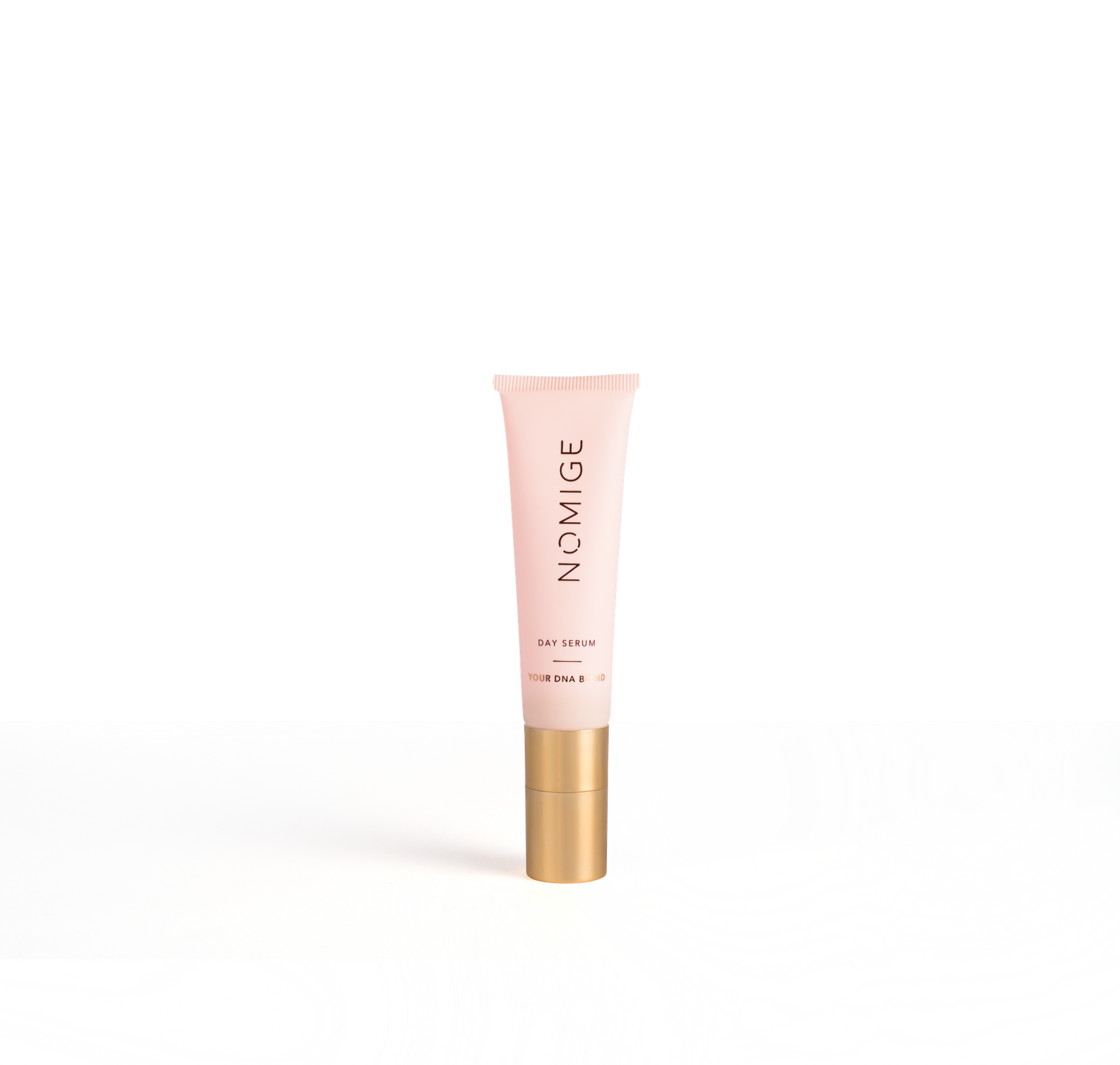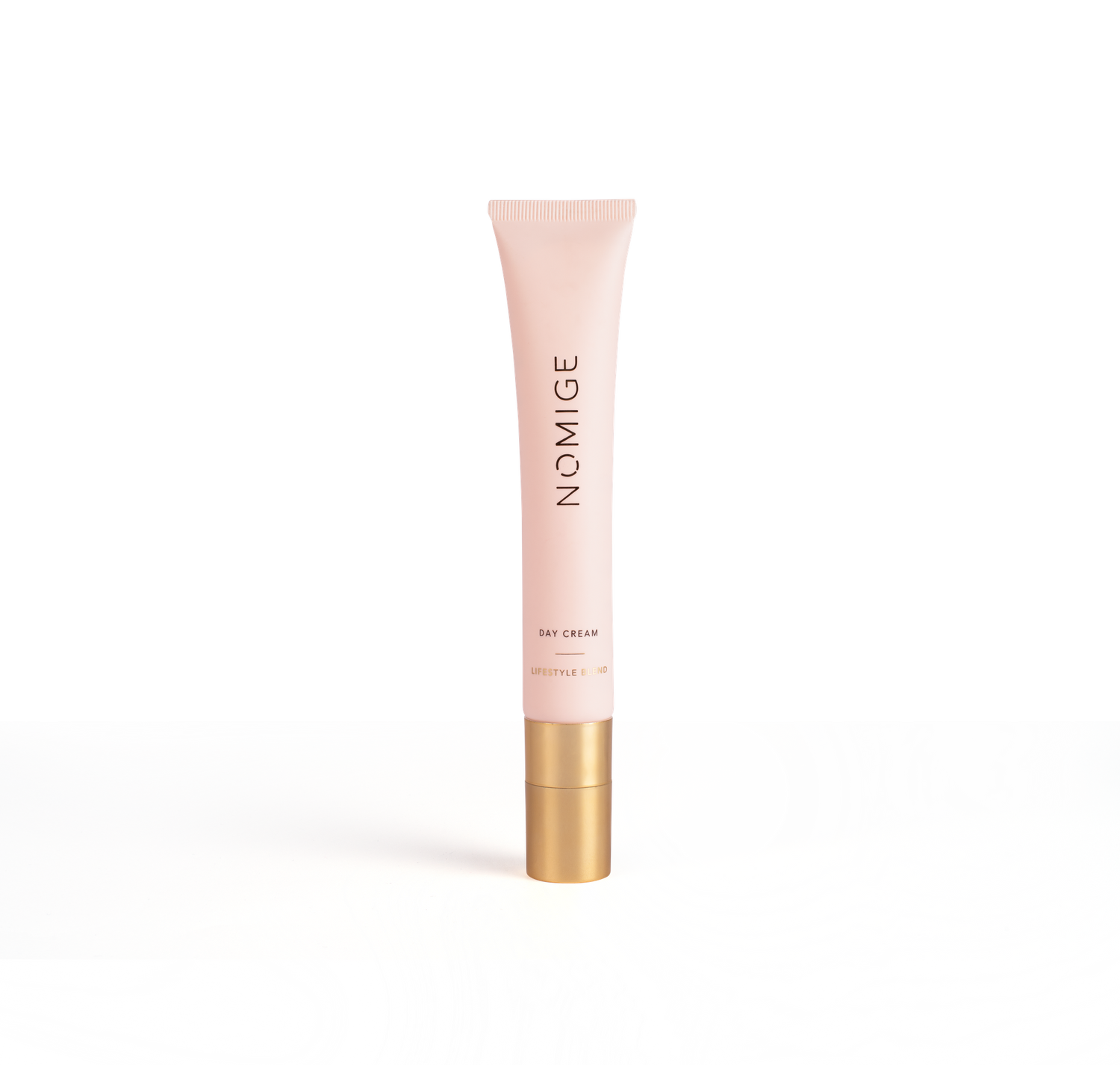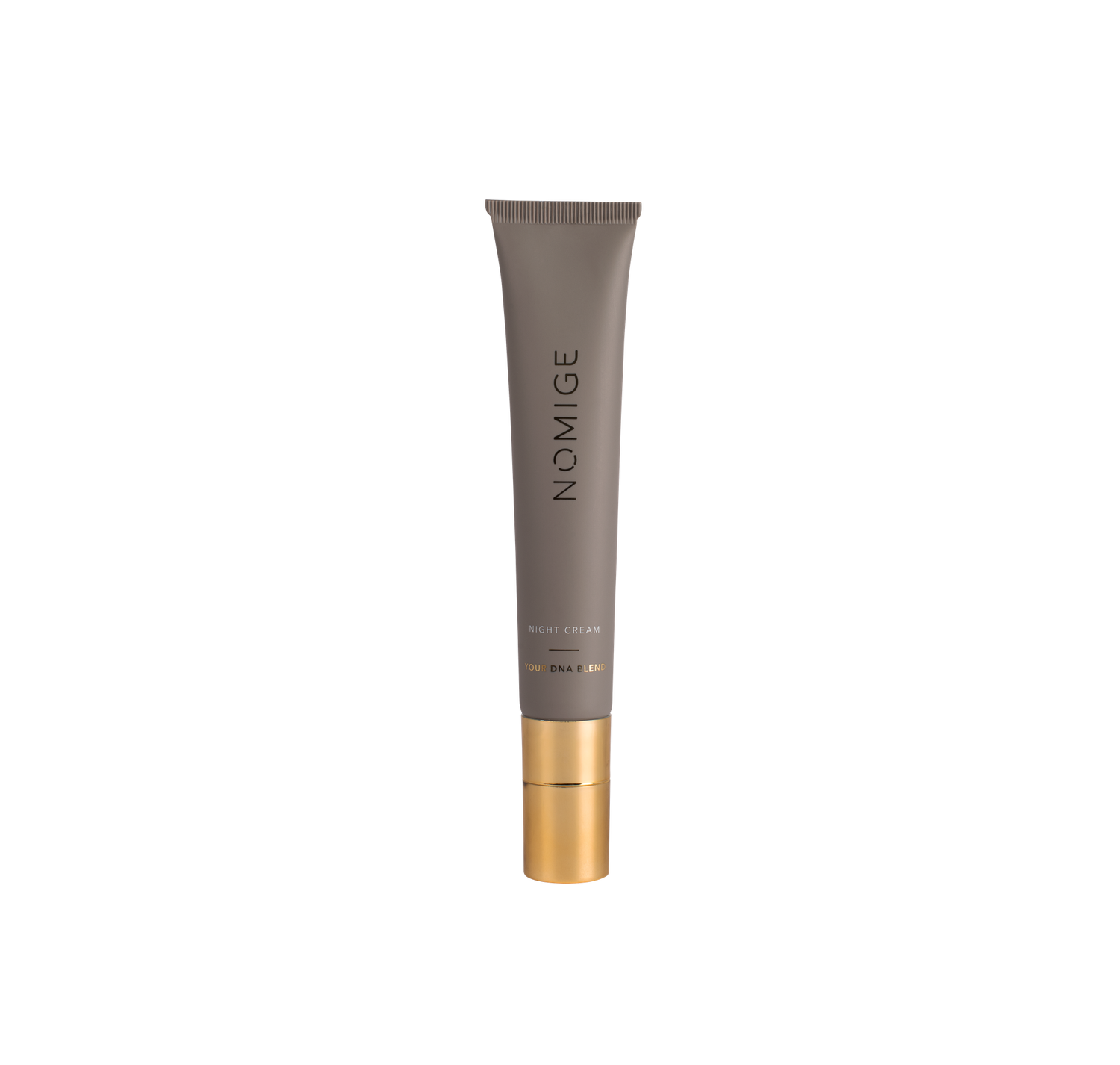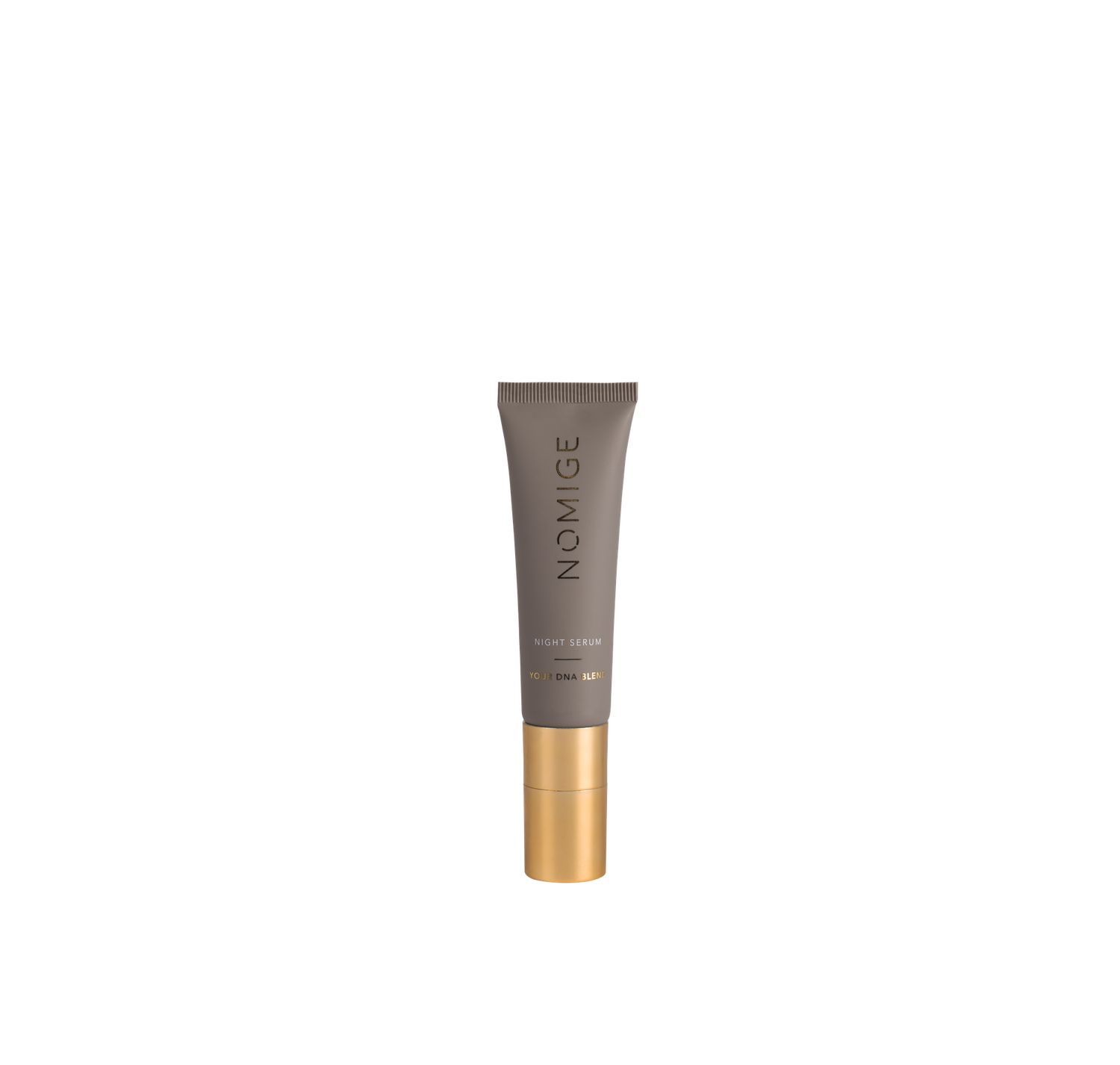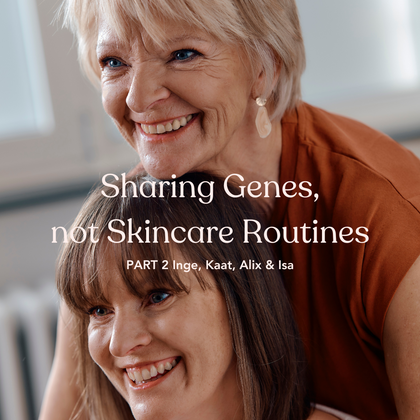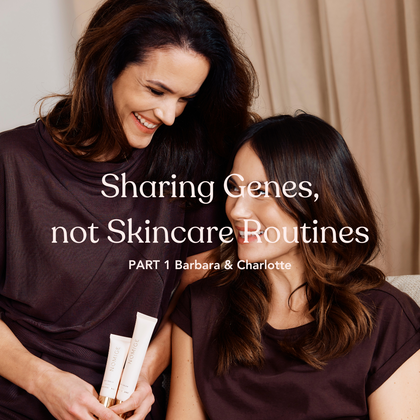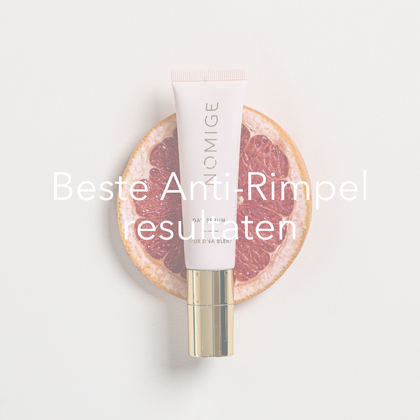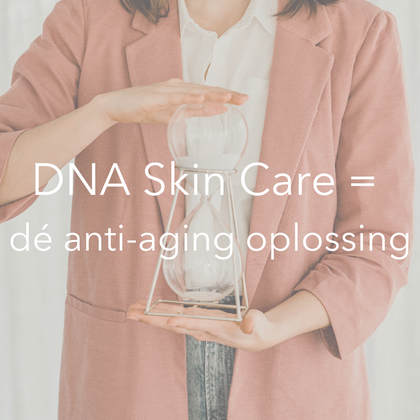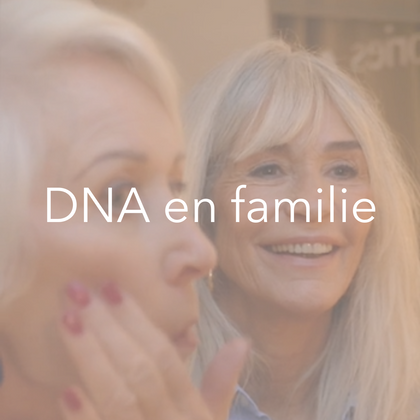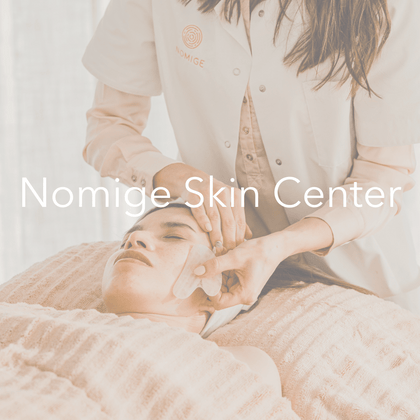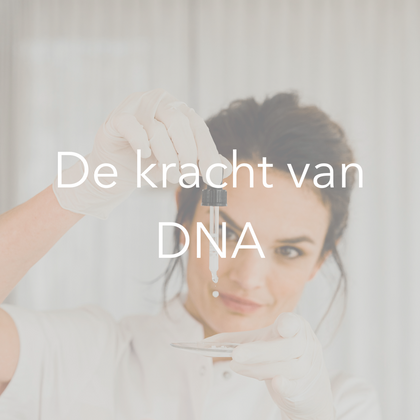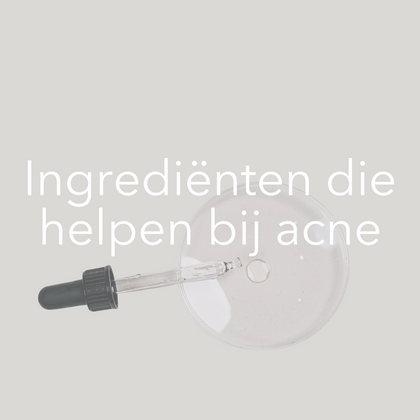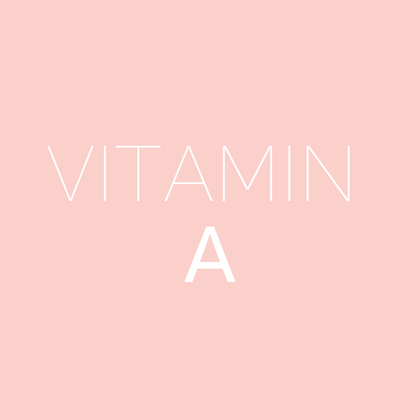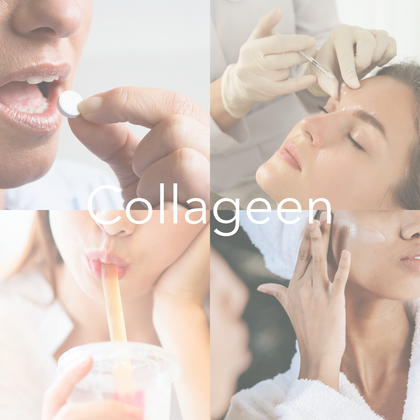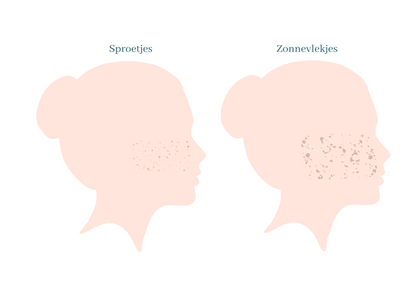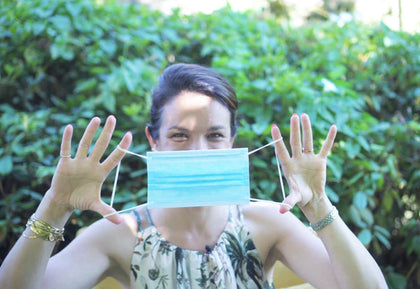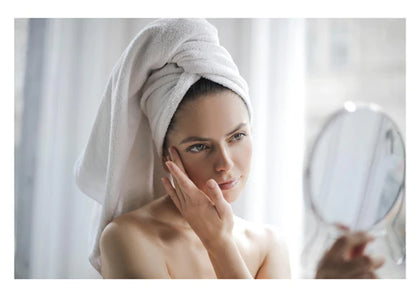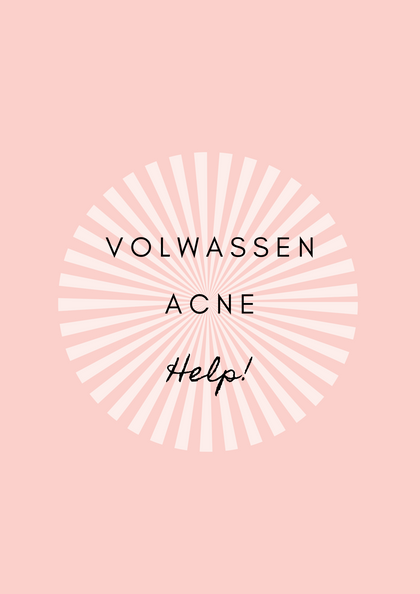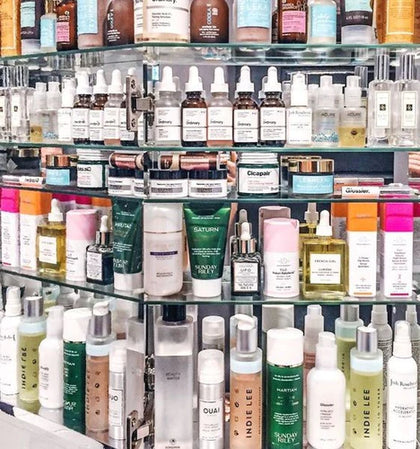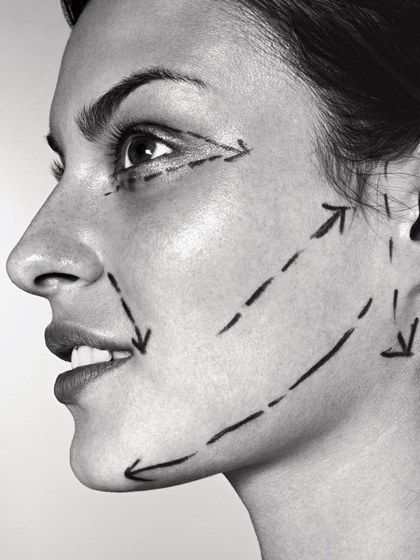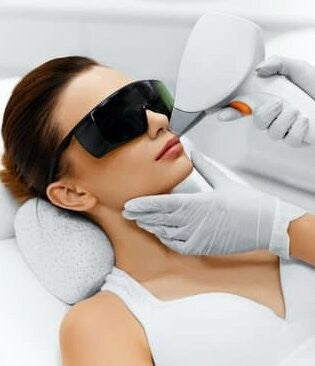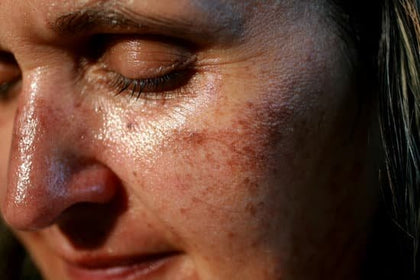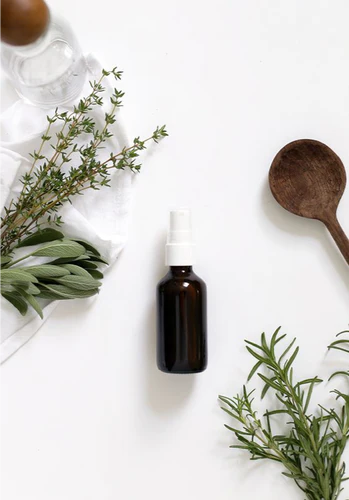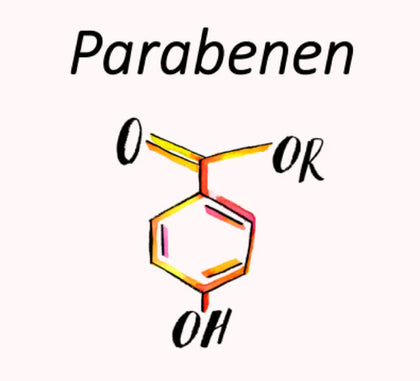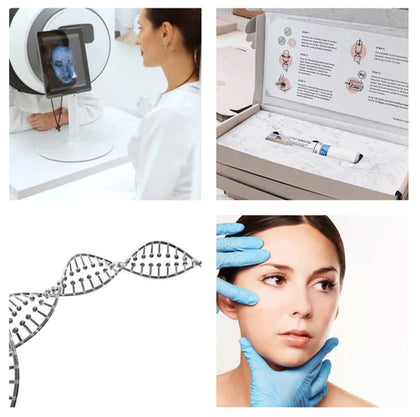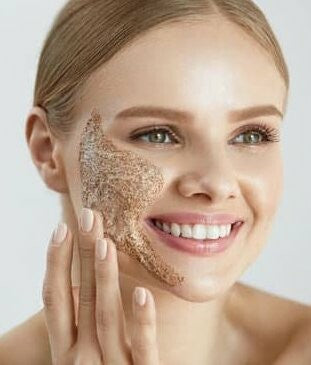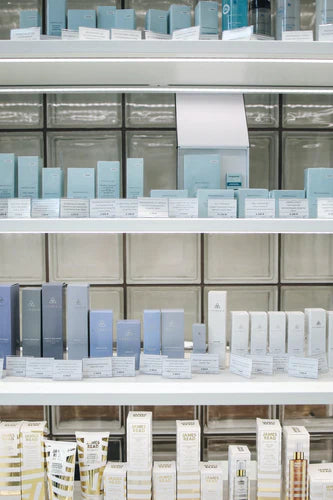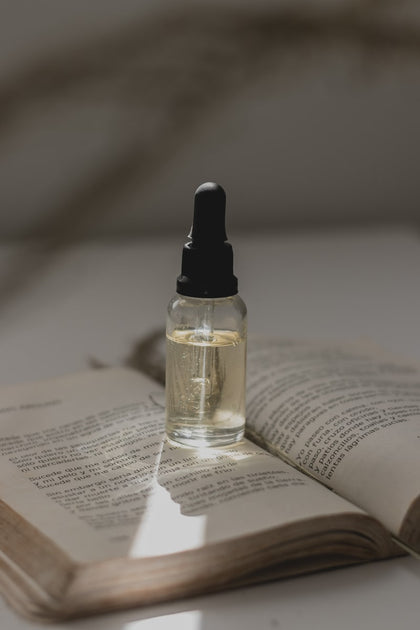Skin aging in general
Skin aging is an extremely complex process that is influenced by multiple factors. In this blog we discuss the most important factors, the signs of skin aging and associated biological changes of the skin.
Our skin tip
The causes
Skin aging is a natural process that occurs in every individual. However, the speed of skin aging and the occurrence of skin aging symptoms can differ between individuals and are determined by both internal and external factors .
INTERNAL FACTORS
When we talk about "intrinsic aging," we are referring to your genetic profile. Some individuals have a genetically lower risk of skin aging. We simply define 'good genes' as genes that show no mutations or 'defects'. "Good genes" can properly perform their function within biological processes that determine skin parameters, such as elasticity, hydration, barrier function, antioxidant capacity ... When genes contain defects or mutations, their function is disrupted. In most cases, this leads to an increased risk of accelerated skin aging.

EXTERNAL FACTORS
Skin aging caused by environmental factors is called 'extrinsic skin aging' . The degree of extrinsic skin aging depends on your individual exposure to environmental and harmful factors such as sun exposure (photoaging), smoking, air pollution, radicals... Ultraviolet light (sun exposure) is one of the most damaging factors for the skin . Another important factor is the formation of free radicals (oxidative stress). All these external factors influence or disrupt the normal skin structure and accelerate the natural skin aging process.
Even if you have 'good genes', early signs of skin aging can occur if you are frequently exposed to harmful external factors. On the other hand, individuals with a high genetic risk of skin aging can still limit early skin aging by avoiding exposure to harmful environmental factors.
The signs of skin aging and the underlying biological changes of the skin
The skin is made up of different layers.
- The top layer is called "epidermis" and consists mainly of keratinocytes. The epidermis forms a protective barrier for the underlying layers, acts as a sensory organ and regulates temperature and moisture balance.
- Below the epidermis we find the second layer or "dermis". This layer contains connective tissue, blood vessels, sebum and sweat glands, nerves, hair follicles and other structures. The dermis also contains fibers (elastin, collagen and reticulin) that provide firmness and elasticity to the skin.
- The bottom layer or "hypodermis" consists mainly of adipocytes (fat cells) and serves as an energy store and thermal insulation. As we age, all of these layers undergo changes and are involved in the signs of skin aging.

Skin aging can be visible in different ways and differs between people.
FINE LINES AND WRINKLES

Wrinkles are indentations in the surface of the skin, so to speak, and can appear as fine lines or deep wrinkles, depending on their depth. As we age, our skin contains less collagen and elastin fibers loosen . The decreased production and increased breakdown of collagen is part of the natural aging process, but can be enhanced by high sun exposure (UV light) and free radical formation. As a result, the skin becomes less elastic, brittle and wrinkles appear. In addition, fine lines and wrinkles are more visible when your skin is dehydrated.
PIGMENT SPOTS

Brown or dark spots may appear on the skin with age. These are called "age spots," "liver spots," or "lentigines." The pigment spots are caused by overactive pigment cells (melanocytes) in the epidermis. Pigment cells naturally produce melanin (pigment) when exposed to ultraviolet (UV) light and give the skin its natural pigment. Prolonged exposure to UV light can cause pigment cells to be overactive and cause a local buildup of pigment, resulting in the formation of "age spots".
AGE INDUCED DRY SKIN

During the natural aging process, the skin undergoes changes that increase the risk of developing dryness. Under the influence of hormonal changes - reduced production of estrogen with aging - our body produces less lipids than when we were young. These skin lipids play a vital role in maintaining the skin's protective barrier, which retains moisture and protects the body from external factors.
There are two types of skin lipids: sebaceous lipids and epidermal lipids. The sebaceous lipids are secreted by the sebaceous glands and protect the skin from the outside, while epidermal lipids are located between the skin cells (brick-cement model) and protect the skin from the inside. Due to the reduction of lipids, the protective skin barrier becomes weaker and the skin's moisture loss increases . The skin becomes drier and can feel rough.
SLAGING OF THE SKIN

As we explained above, our skin contains less collagen and elastin fibers loosen as we age. This causes wrinkles and reduces the firmness and elasticity of the skin. The skin also slackens under the influence of gravity. In addition, there is a redistribution of facial fat in the lower layer of the skin (hypodermis), which can lead to loss of facial volume and contribute to sagging skin.
A DUST TONE OF THE SKIN

The top layer of skin renews itself every 28 days. New skin cells are produced and migrate to the surface of the skin. On the surface, they turn into dead skin cells (corneocytes) and are exfoliated. As the skin ages, the skin cell renewal process takes longer , causing a buildup of dead skin cells and the skin to become thinner than before. The result is a duller complexion and a rough feeling of the skin.
Why is Nomige so special?
Nomige differs from many other skin care brands in that it not only takes into account your lifestyle factors (external factors) or skin type, but also your genetic skin profile (internal factors). By examining your DNA , we can gain more insight into your skin aging process. In the lab, we analyze several genes involved in collagen homeostasis, antioxidant protection, barrier function and skin hydration . Based on your DNA profile, we know what risks you run and we develop products with ingredients that specifically act on these risks.

DNA analysis & report
Learn more about DNA skincare & Nomige from Dr. Barbara Geusens
Watch an interactive and educational session in which you learn more about your skin, the role of your DNA, skin care and the concept of Nomige concept.
The online Masterclass is the ideal opportunity to learn more about Nomige and DNA skin care.
Do you want to know more about skin aging?
Skin aging is a very complex process that is influenced by both internal factors (your DNA) and external factors (such as the sun, pollution, weather conditions, smoking...). Every skin is unique and so is the aging process.
Follow our story
Connect with us and follow the hashtag #MyNomige to stay up to date with the latest skin tips and news.
Follow our story
Connect with us and follow the hashtag #MyNomige to stay up to date with the latest skin tips and news.
